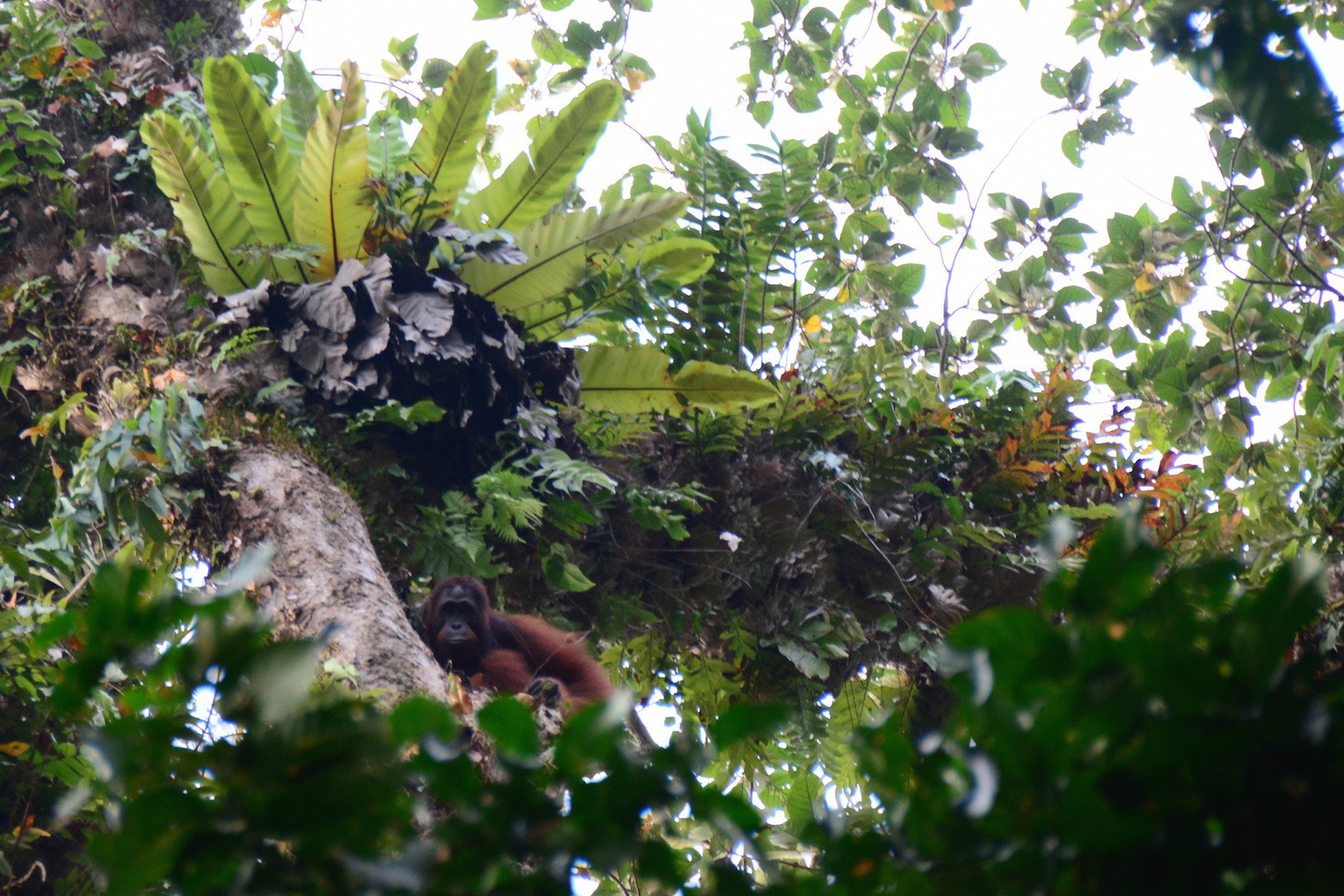“Excuse me,” the unassuming man tapped me on the shoulder as I snapped a picture of the lush mountain rising in front of us. “My name Muslianto – your guide.”
I switched my camera off and turned around to shake his hand. It seemed difficult for him to pronounce the full version of my name, so I shortened it. “Rob,” I said. “You can call me Rob.”
My Adventure Seeing Orangutans in Borneo
“You speak Indone-si-a?” he smiled.
I shook my head. “Maaf,” I apologized. “Do you speak English?”
“Little,” he smiled even wider, and motioned for me to follow him across the river.
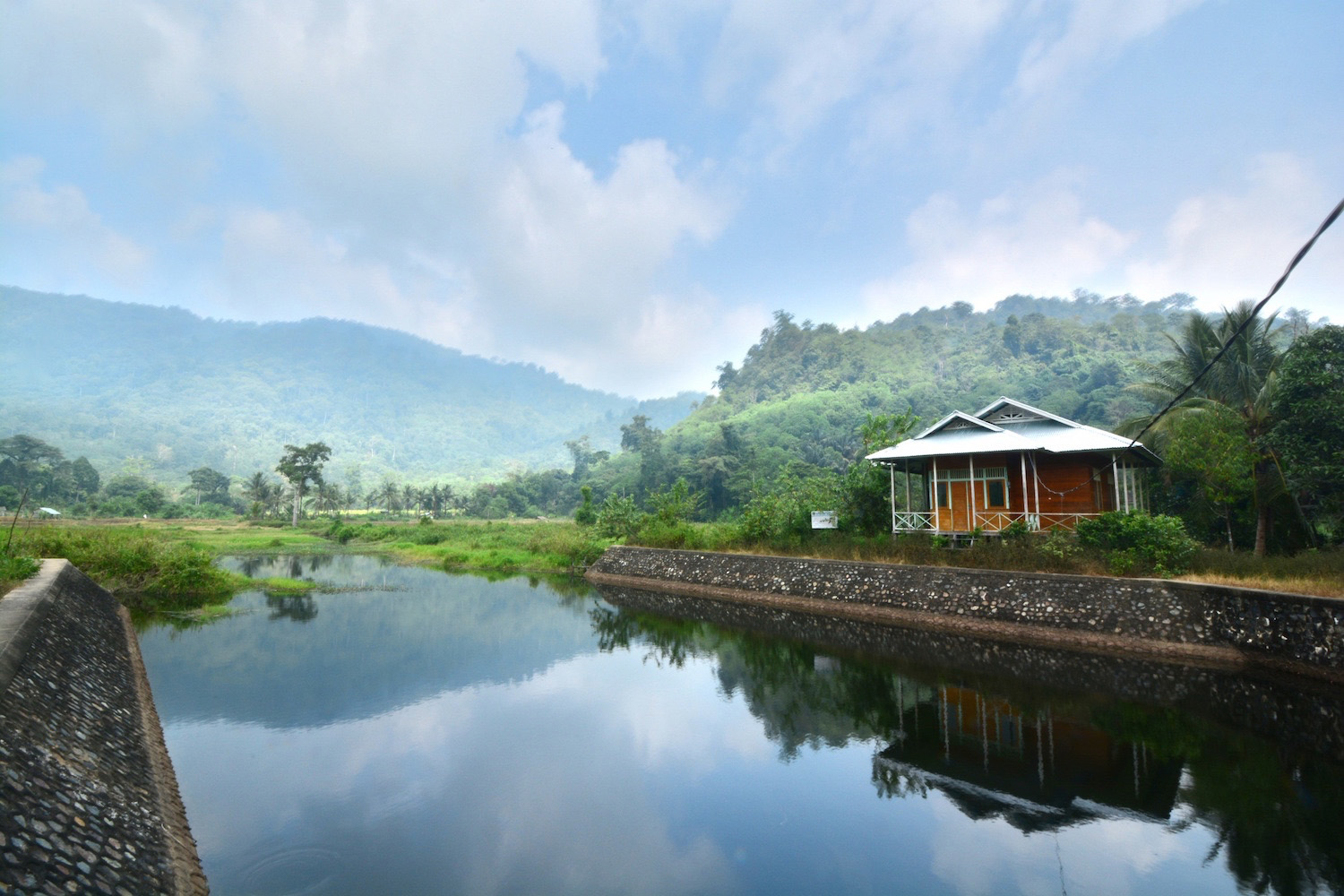
The first couple hours of the hike into the jungle were strenuous enough that me and Musli, as I soon found out he liked to be called, didn’t say a lot. Then, we took our first break, which found us perched on the side of a high waterfall that emptied into a crystal-clear pool below.
“Swim here?” I asked, and made a swimming gesture.
“No,” he said. “Berbahaya – Indonesia word for ‘not safe.'”
“Dangerous?” I confirmed, and pretended to slice my own throat. “Die?”
“Yes,” Musli laughed. “Dangerous – die!”
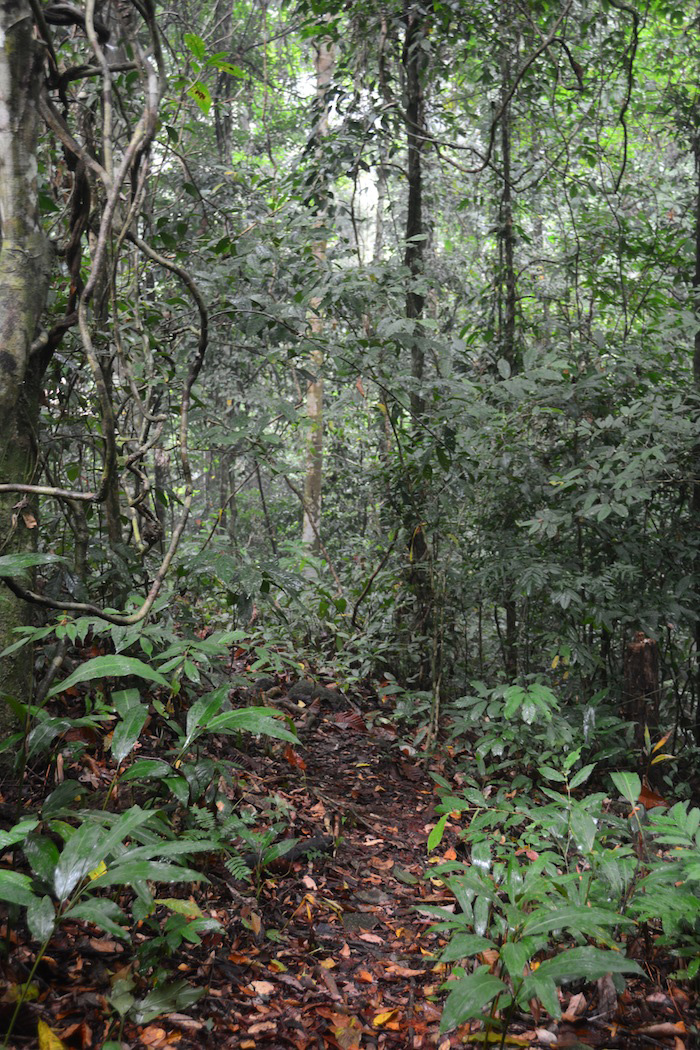
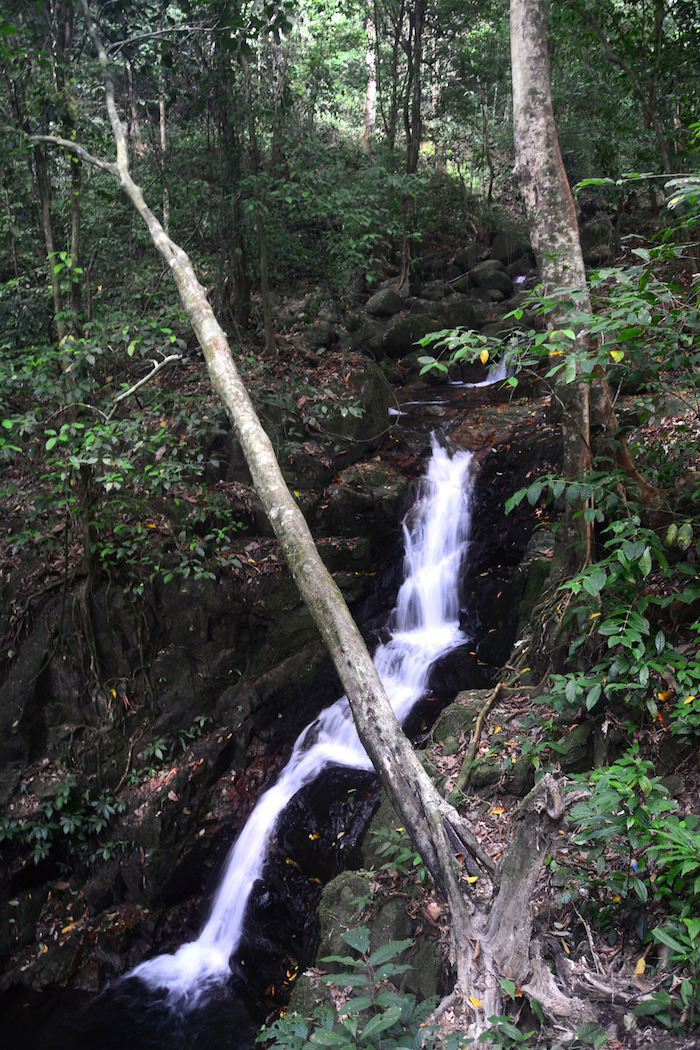
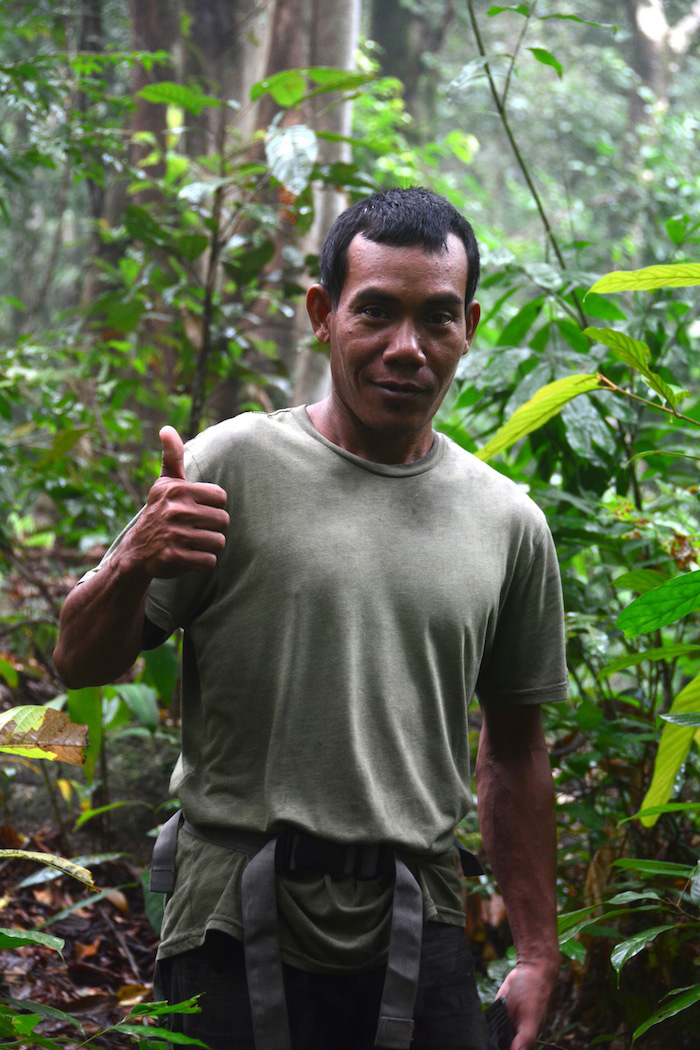
This is how our communication began to develop – a little bit of Indonesian here, a little bit (well much more, to poor Musli’s chagrin) of English there. It moved slowly, to be sure, but by the time we arrived at camp, about three hours after we set off, Musli had already communicated the most important piece of information to me: That I could trust him.
I knew, as soon as I selected my Indonesia orangutan tour from Gunung Palung National Park, located in western Borneo, that I would be embarking on a trek called “Lubuk Baji.” It was only when I stumbled upon a campsite of the same name, which I only knew on account of the sign posted on its front side, what a delightful decision I had made.
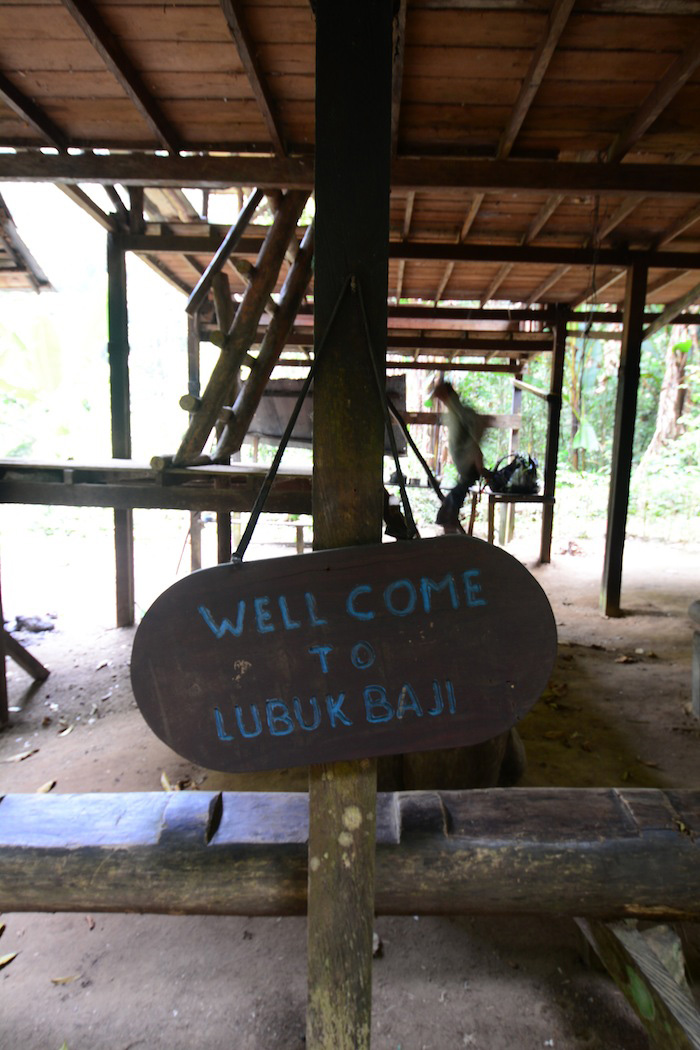
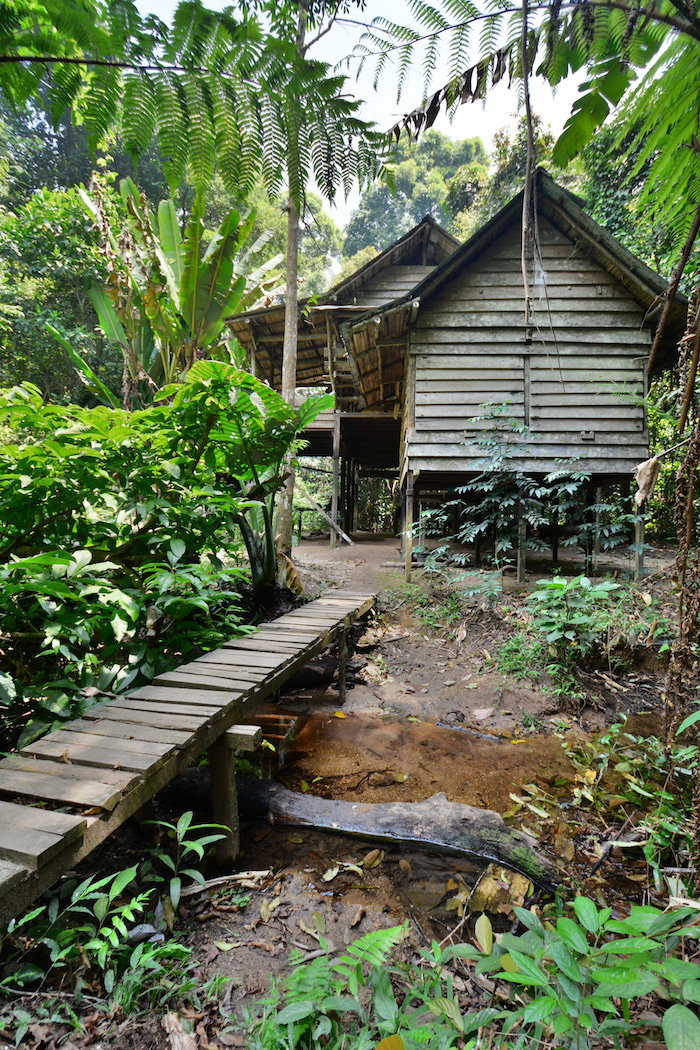
Lubuk Baji, in addition to being one of the best places to see orangutans, is the treehouse you dreamed of your entire childhood, a two-story dwelling built right into the middle of the jungle, flanked to the east and west by small creeks, with a lush banana grove to its north. It is at once in the middle of everywhere and the middle of nowhere.
Lubuk Baji is not actually a treehouse; although it is surrounded on all sides by trees of every sort you could possibly imagine, it is built into the ground. And yet it is minimalist enough in its construction – and open enough it its design – that climbing up to its second floor gives the same impression that climbing any of the trees around it – and many of them are ideal for climbing – would do.

It was difficult to remember, after relaxing for hours with Muslianto’s home-cooked nasi goreng with fried tofu, chicken and tempeh, that the purpose of my trip was not to chill in the middle of the jungle, but to comb every inch of said jungle, doing what I’d flown all the way to Borneo to see: A Borneo orangutan tour.
And I would need to scour quite a bit of the jungle before I saw my first orangutan.
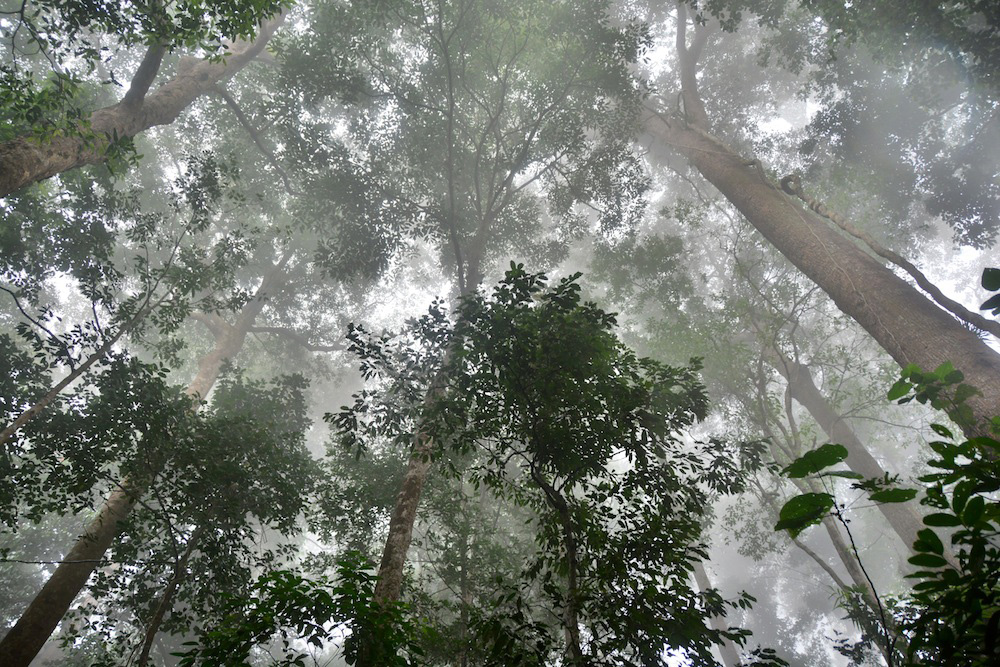
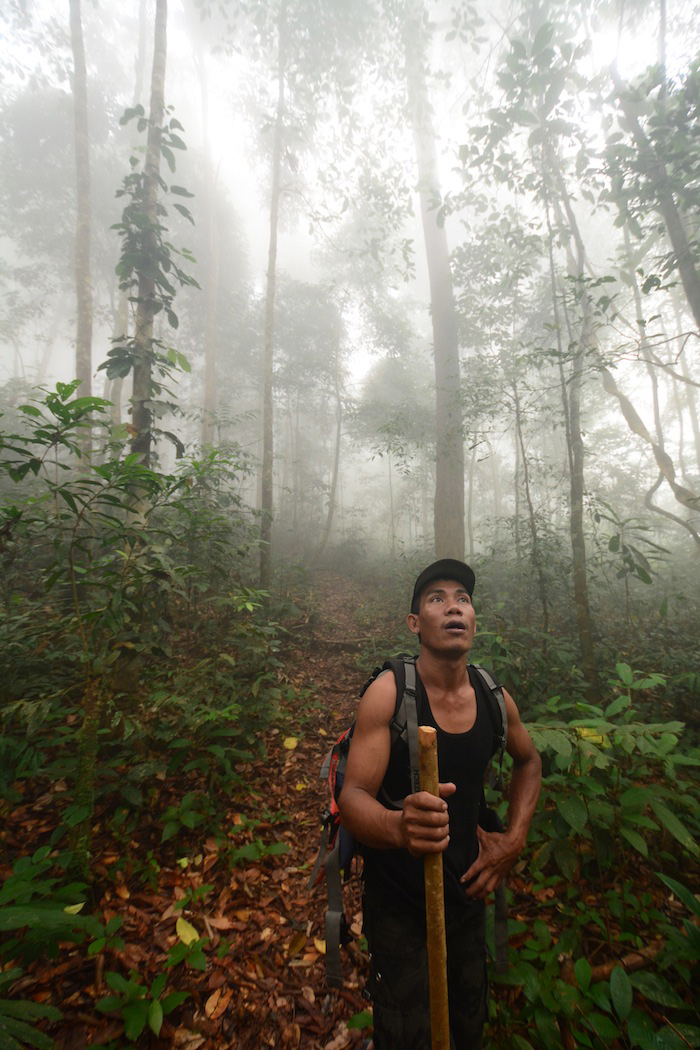
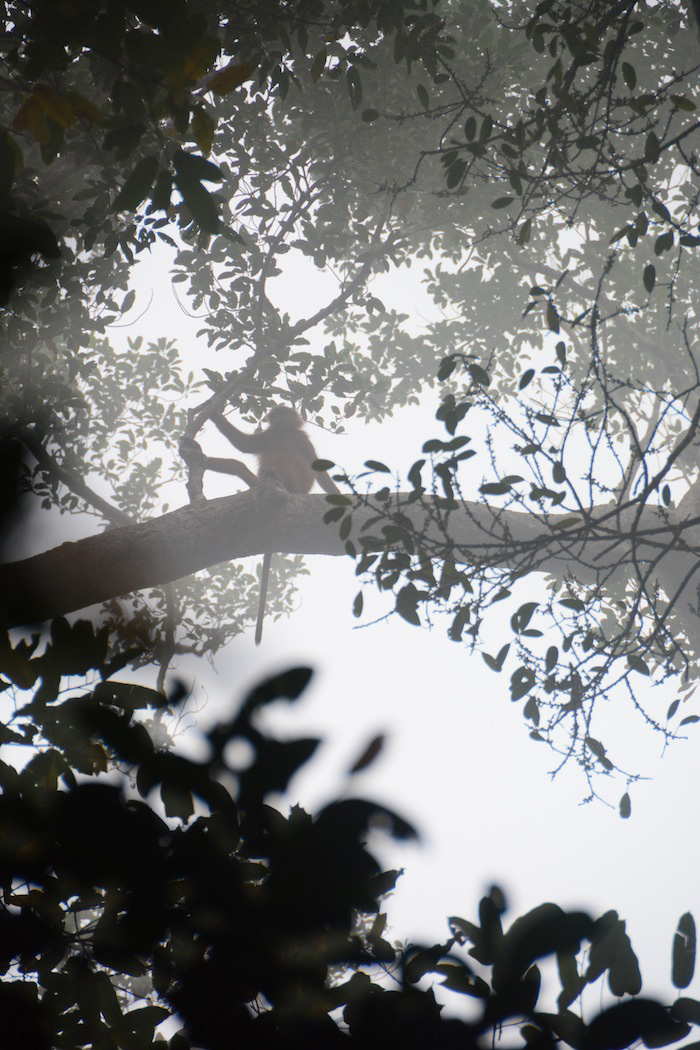
“When Rob no see orangutan,” Musli said after our morning hike on the second day, which had brought us up to the magnificent Batu Bulan viewpoint and then back to camp, “Rob no happy.”
I shook my head. “No Musli, that’s not true. I am very happy. You showed me beautiful jungle and beautiful view. We saw macaques and gibbons.” I put my hand on his shoulder to reassure him. “I am very happy – very senang.”
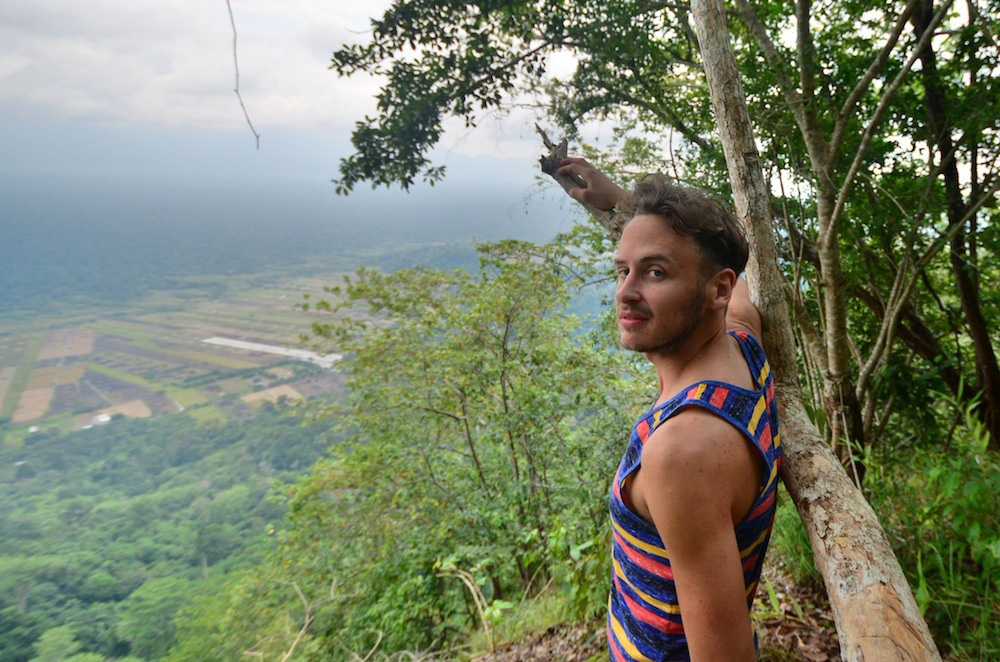
And I was happy. Thing is, the possibility to see orangutans was far and away the number one reason I’d happily forked over 1.6 million Indonesian rupiah two days before, so of course my disappointment that we hadn’t seen any yet, with less than 24 hours to go, was probably manifesting itself on my face.
When Musli and I returned to Lubuk Baji, a Swedish traveler named Colin (as well as two additional guides named Santo and Ali) had come to join us. I chatted with Colin, who is only 20 but is already in the middle of his first six-month trip, as the guides prepared lunch.



“Of course we can all go trekking together,” I said. “Five pairs of eyes looking for orangutans is way better than two.”
Then again, five pairs of feet stray far more than two, especially considering that there aren’t any real “trails” around Lubuk Baji: You simply walk wherever the old-ish growth forest is light enough in its coverage for you to pass, looking out for spiders, wasps and ratan thorn wands to the best of your ability as you go.
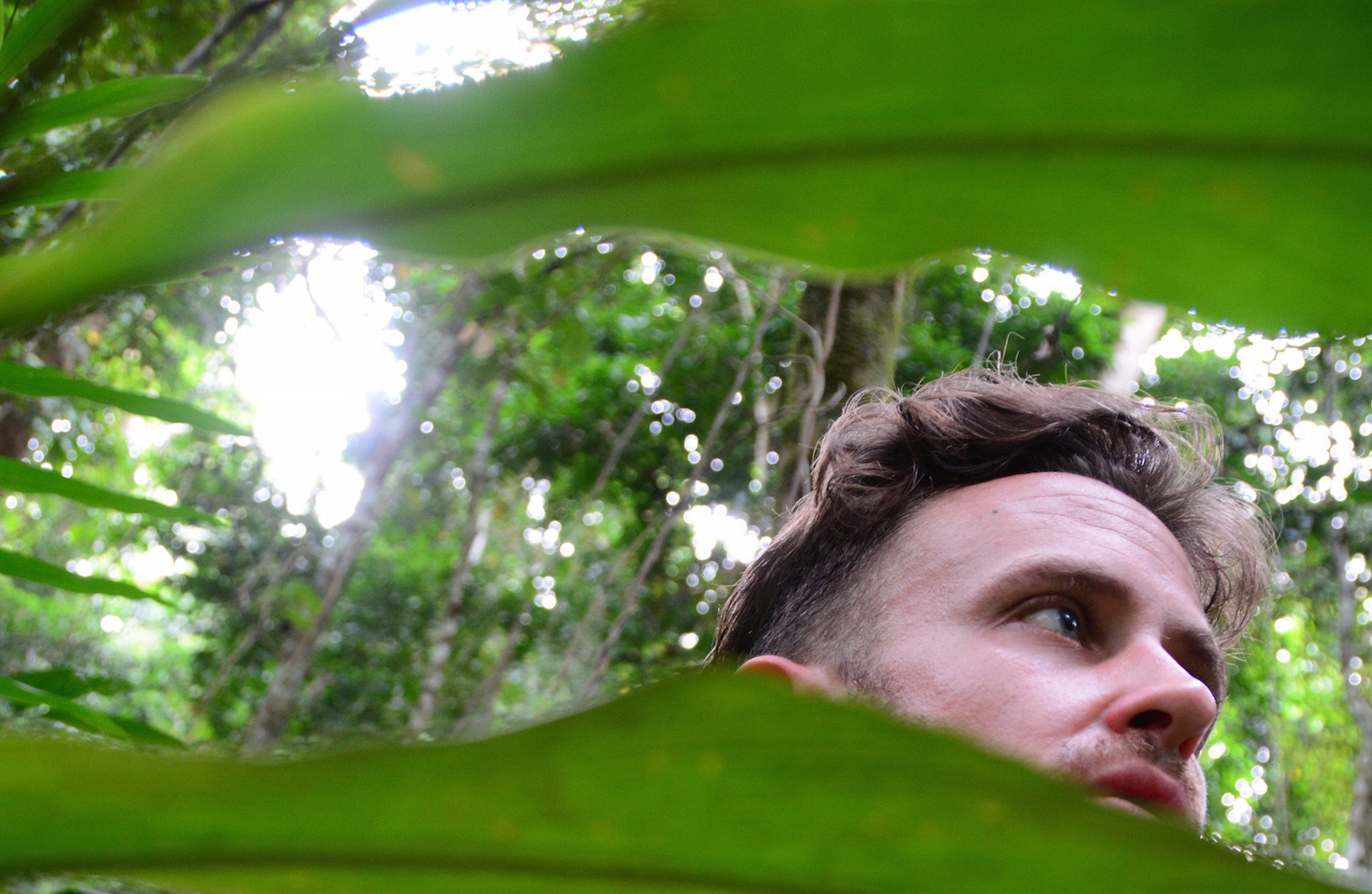
“Hati-hati,” Musli whispered back to me as we inched toward the lip of a ravine we hadn’t been to yet. I passed the message back to Colin, who passed it on down the line to Santo and Ali. Musli had also gestured that we should be quiet, in addition to being careful, although he hadn’t said exactly why.
It took both Colin and I several minutes to see the huge orangutan sitting in the tree in front of us. To our credit the creature, big as it might have been, was no less than 100 meters off in the distance; then again, Musli is nearly as old as both of us combined and he still managed to see it without a camera’s zoom lens to aid him.

Musli, Colin and I then sprinted for about a half hour, over relatively treacherous, extremely wooded terrain, only to find that the large orangutan had lifted itself up in the tree and out of sight – that was the bad news.
The good news? We spotted its baby, albeit at a vertical distance that was probably almost as long as the lateral distance that had previously separated us.
This is the most frustrating thing about an Indonesia orangutan tour, as oppose to hitting up, say, Tanjung Puting National Park and seeing semi-tame ones: You will probably not get very close to the orangutans. Even if you do, as I did the morning of day three, you will likely have to contend with thick layers of foliage and condensation as you attempt to take acceptable pictures.

But to me, the trade-off of seeing wild orangutans in Indonesian’s Gunung Palung National Park is more than worth it. I’ve had as few experiences so satisfying as watching a majestic great ape swing 100 feet overhead as I’ve stayed places as wholly wonderful as Lubuk Baji camp.
And I have certainly never felt as thankful to a single person I met while traveling as I did toward Muslianto, who is truly a master of the jungle if one exists. He not only helped me see orangutans and became my friend in spite of a massive language barrier, but kept me completely safe in a place where I would almost certainly have injured or killed myself without him.

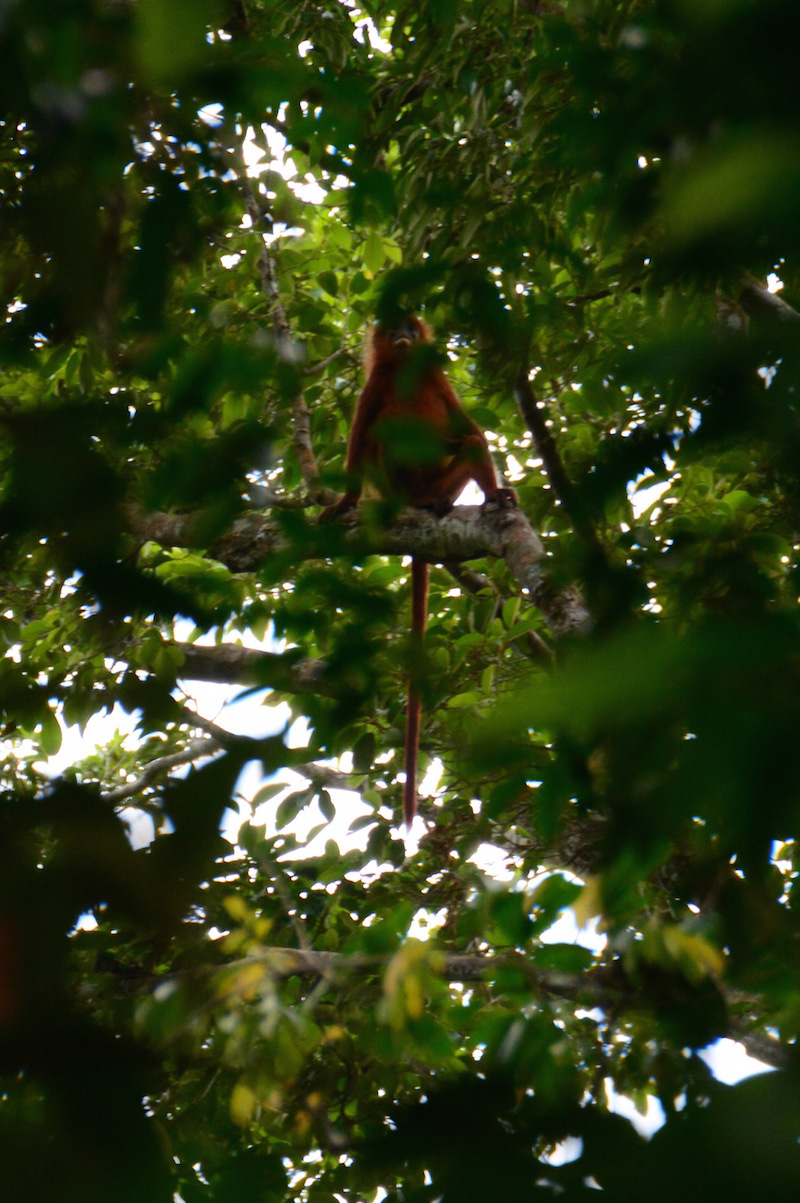
“Rob happy?” Musli asked as we exited the jungle into the durian groves near his home just outside of Sukadana, the town closest to Gunung Palung Park.
“Rob happy,” I nodded, although I was sad that my journey would soon be over. “Rob very, very happy.”
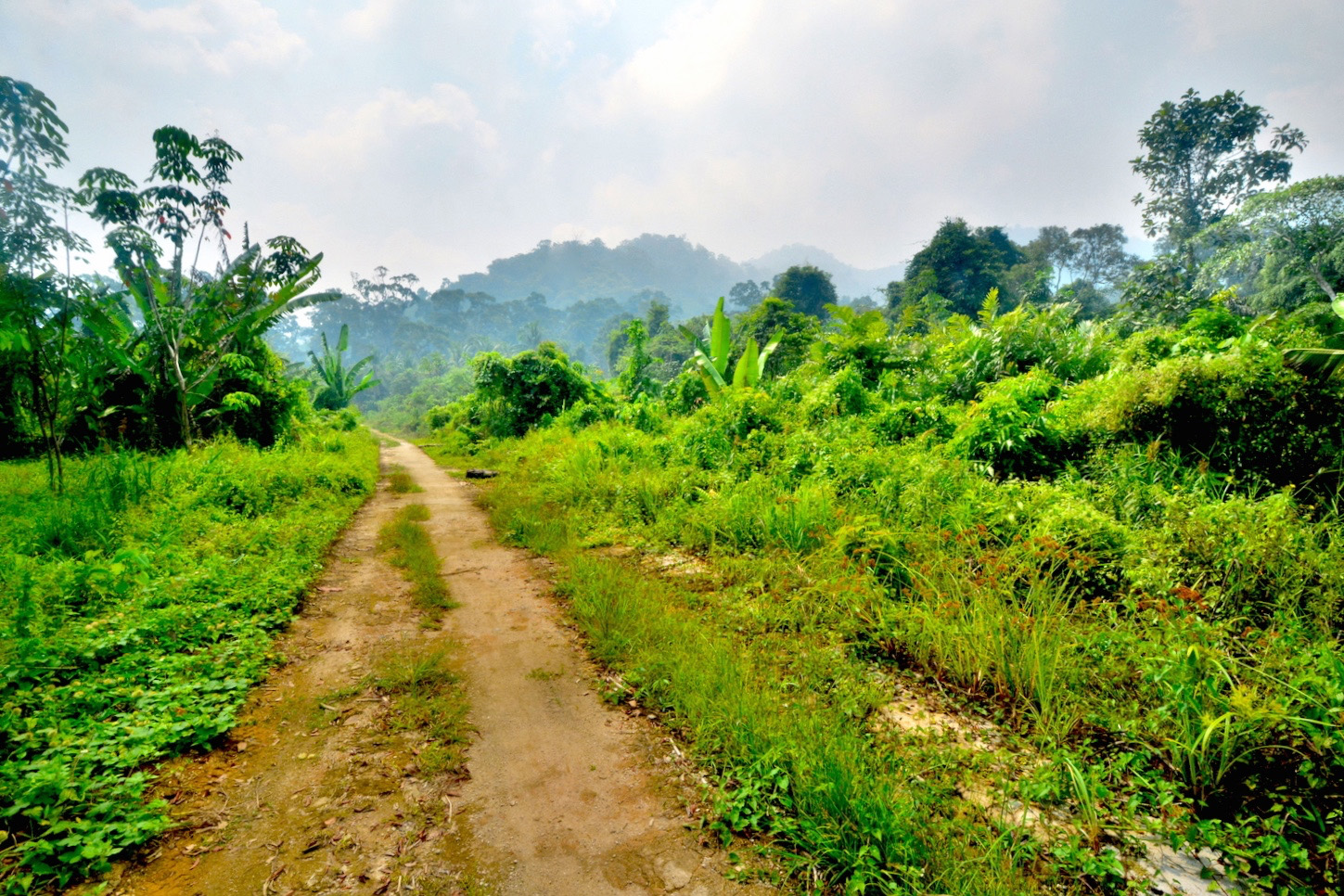
FAQ About Seeing Orangutans in Borneo
Where can I see the orangutans in Borneo?
You can see orangutans in either Indonesian or Malaysian Borneo. A trek through Gunung Palung National Park in Kalimantan (Indonesian Borneo) is the best place to go to see wild orangutans, while most orangutans in Sarawak (Malaysian Borneo) are semi-tame.
Can you see wild orangutans in Borneo?
You can see wild orangutans in Indonesian Borneo, although you’ll need a guide to take you on the trek if you want the best chance of seeing them. Although some wild orangutans exist in Malaysian Borneo, most places you visit house semi-domesticated ones.
Can you hold an orangutan in Borneo?
If you travel all the way to see orangutans in Borneo, you may want to hold one as well. Although some orangutan centers in Borneo (particularly the Malaysian part) allow you to hold a baby orangutan, I urge you to consider not doing this: Orangutan babies who are held by humans have a much higher rather of morality than they otherwise would.
The Bottom Line
Although you can see orangutans in Borneo in Malaysia—Sarawak and Sabah—I opted to go to Kalimantan, the Indonesian part of the island. This is definitely one of the best places to see orangutans in Borneo! I booked my Orangutan trek trip through a company called Nasalis Tour, but beyond that there wasn’t much organization. A guide named Musli took me on a Gunung Palung National Park tour, during which I slept at a treehouse camp called Lubuk Baji and trekked several hours a day for three days, seeing five wild orangutans during my Borneo orangutan trek.



